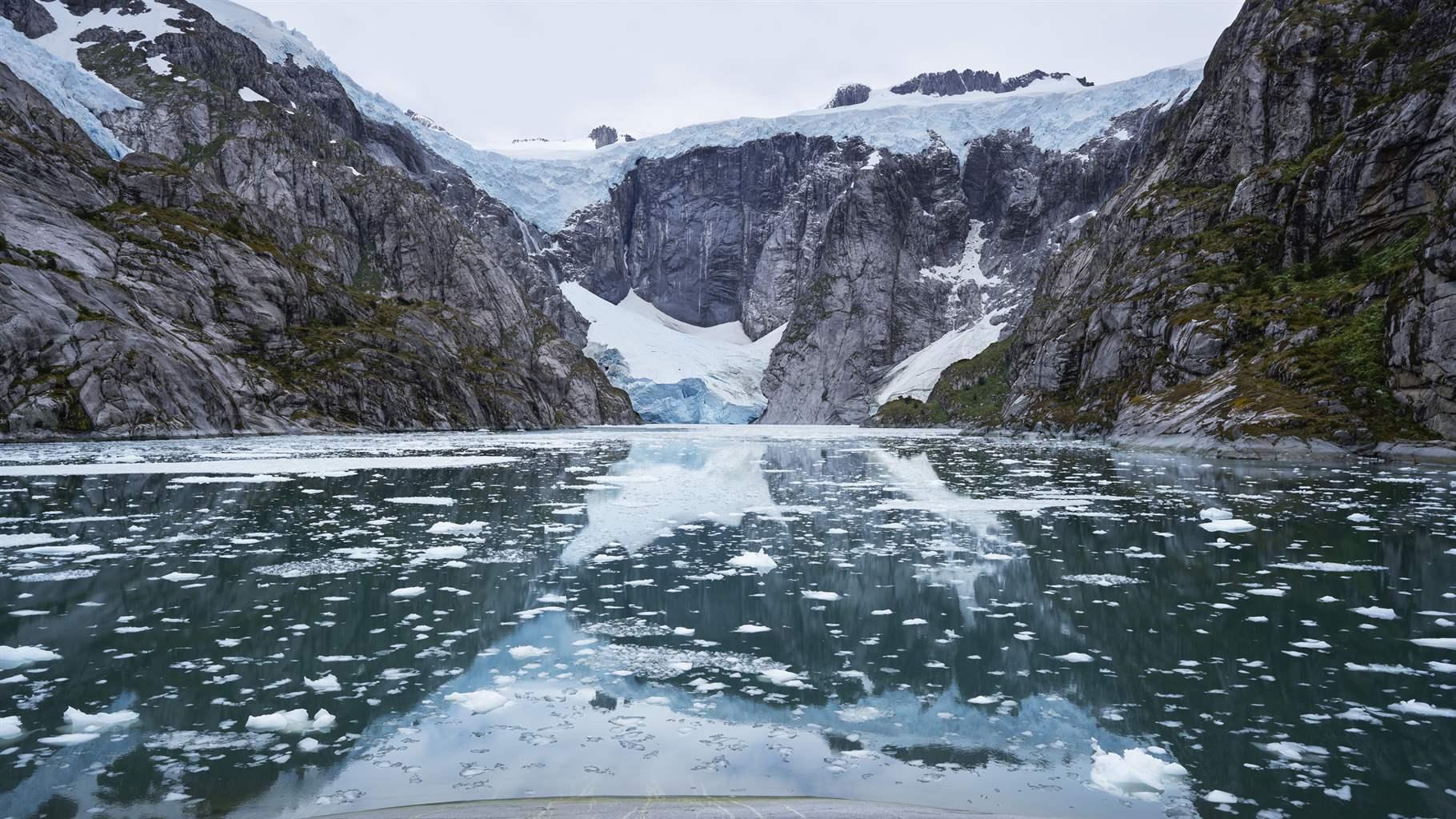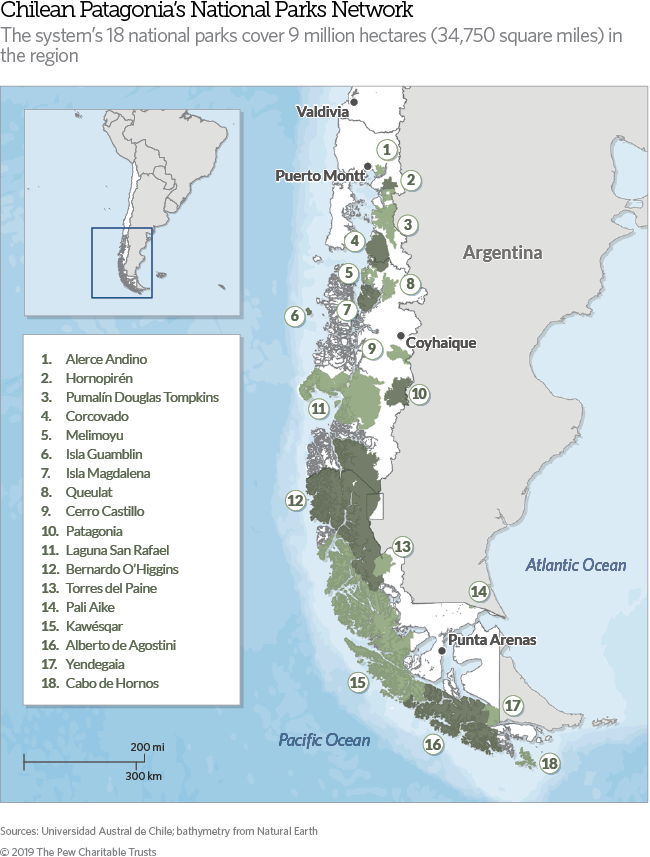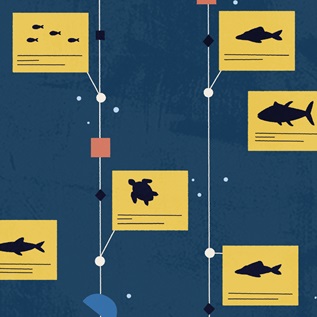The Challenges of Conserving Chilean Patagonia
Pew and its partners are working with communities and authorities to protect land and sea

This fact sheet was updated on May 7, 2019, to correct the number of hectares that Chilean Patagonia’s glaciers, forests, and archipelagos cover.
Overview
With Chile protecting more than 21 percent of its territory, the next decade offers a crucial opportunity to develop effective conservation measures that guarantee the appropriate and long-term stewardship of these areas. Yet new threats keep emerging, and several key challenges remain. Management of national parks must be strengthened, additional funding must be allocated, and more personnel are needed.
Today, Chilean Patagonia in particular has only 113 full-time staff members dedicated to its parks. Each ranger in the Aysén and Magallanes regions, for example, looks after an average of 63,800 hectares (246 square miles)—an area the size of Singapore.
Notable for its glaciers, forests, and archipelagos that span more than 26 million hectares (100,368 square miles)—comparable to the size of New Zealand—Chilean Patagonia is a special place that needs protection. Its endemic species, its pristine environment, and the interconnectivity of land and sea, with 40 percent of the area composed of islands, make it a region of exceptional ecological value.
Unlike the drier Argentine Pampas on the east side of Patagonia, the humid and wet climate on the Chilean side in the west creates one of the few cold sub-Antarctic jungles in the world—a lush forest of ñirres, coigües, lengas, and other native trees that extends to the edge of South America, where a rugged coastline gives way to more than 40,000 islands.
But mining, hydroelectric dams, salmon farming, and other extractive activities pose potential threats to the region and its rich biodiversity.
Important progress
Chile has made great strides in land and sea protections in recent years. In March 2017, then-President Michelle Bachelet and conservation philanthropist Kristine McDivitt Tompkins signed an agreement to expand Chile’s national system of protected areas by 1.35 million hectares (5,200 square miles).
Under the accord, 407,000 hectares (1,570 square miles) of Patagonia, acquired by the Tompkins family and managed until then as a private park that was open to the public, were donated to the Chilean government. In exchange, the government earmarked almost 1 million hectares (3,860 square miles) of public land for conservation, all for the creation of new national parks or the expansion of existing parks.
And in January 2018, Chile established the Parks Network, bringing the total amount of protected areas in Chilean Patagonia to 13,515,608 hectares (52,184 square miles).
Pew in Chile
In the next decade, long-term maintenance of the world-renowned Patagonia regional ecosystem, and the communities within it, is a conservation and economic development priority. This is a major focus for The Pew Charitable Trusts, which is working with other nonprofit organizations, universities, local officials, and community residents to bolster the protection of this area for the good of Chileans and the environment.
Pew and its partners in Patagonia work to:
- Strengthen the management of existing parks to help them meet international conservation standards.
- Establish a robust system for protecting marine-coastal ecosystems.
- Create new protected areas and/or agree to conservation measures on public lands and with private landowners.
- Increase funding for protected areas and encourage sustainable development in gateway communities.
To achieve these goals, Pew focuses its efforts on three key areas: science, partnerships, and public policy.
Science: To have a scientific basis to support its conservation work in Patagonia, Pew partnered with the Universidad Austral de Chile to develop scientific proposals for the creation and management of protected areas and to map currently protected public lands and other areas of high conservation value.
Partnerships: Pew values strong alliances with organizations that share the goal of improving the protection of natural areas in southern Chile. For the Chilean Patagonia conservation project, diverse entities came together to create the Patagonia Mary Tierra working group, a consortium of nine nonprofit organizations, including Pew, that aims to conserve Chilean Patagonia’s land and marine ecosystems for the public good.
Public policy: As a nonpartisan, nongovernmental global research and public policy organization, Pew is dedicated to serving the public. Our mission is to:
- Improve public policy by conducting rigorous analysis, linking diverse interests to pursue common cause, and insisting on tangible results;
- Inform the public by providing useful data that illuminate the issues and trends shaping our world; and
- Invigorate civic life by encouraging democratic participation and strong communities.
In Chile, Pew partners with other organizations to provide research and the recommendations of experts in land and marine conservation.
The coming years are a crucial time for Pew, its partners, and the community to work together to ensure that Chilean Patagonia’s national parks get the resources they need, while continuing to support the creation and effective management of additional protected areas in Chile.













